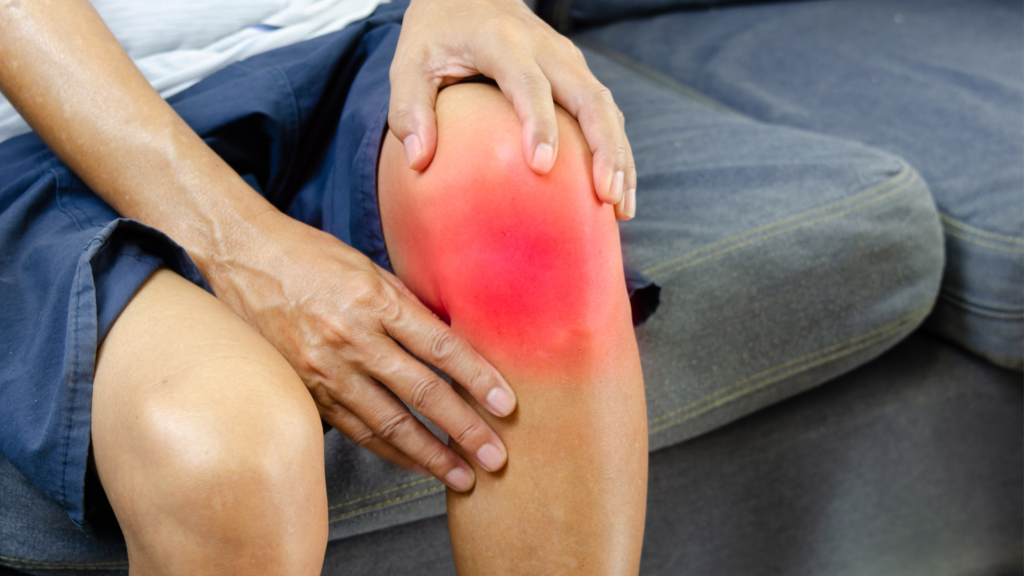Are you experiencing knee pain when bending? If so, you’re not alone. Many people suffer from this type of pain, which can range from mild to severe.
Knee pain when bending can have various causes, and it’s important to identify the underlying issue to determine the appropriate treatment. Some common causes of knee pain when bending include:
Osteoarthritis: Osteoarthritis is a degenerative joint disease that can cause pain and stiffness in the knee joint. Pain is often worse when bending the knee, and it may be accompanied by a grinding sensation.
Rheumatoid Arthritis: Rheumatoid arthritis is an autoimmune disease that can affect the knee joint, leading to pain and stiffness, especially during movement.
Meniscus Tear: The meniscus is a cartilage in the knee that can tear due to injury or wear and tear. A torn meniscus can cause pain and discomfort, particularly when bending the knee.
Ligament Injuries: Injuries to the anterior cruciate ligament (ACL), posterior cruciate ligament (PCL), or collateral ligaments can cause pain and instability in the knee, especially during bending and twisting movements.
Tendonitis: Inflammation of the tendons around the knee, such as patellar tendonitis (jumper’s knee), can result in pain when bending the knee.
Bursitis: Inflammation of the bursae, which are fluid-filled sacs that reduce friction in the knee joint, can lead to pain and discomfort during knee movements.
Chondromalacia Patellae: This condition involves softening and degeneration of the cartilage on the underside of the kneecap and can cause pain when bending the knee.
Overuse or Strain: Activities that involve repetitive knee bending, such as running, jumping, or kneeling, can lead to overuse injuries and pain.
Baker’s Cyst: A Baker’s cyst is a fluid-filled sac that forms behind the knee and can cause pain and stiffness, particularly when bending the knee.
Gout: Gout is a type of arthritis that can lead to sudden and severe knee pain, especially when the joint is moved.
Patellofemoral Pain Syndrome: This condition often causes pain around or behind the kneecap, especially when bending the knee, climbing stairs, or sitting for prolonged periods.
Torn or Ruptured Tendons: Injuries to the tendons that attach to the knee, such as the quadriceps or patellar tendons, can lead to pain when bending the knee.
Exercises to improve flexibility and range of motion
Exercise can play an important role in improving knee flexibility and range of motion. Stretching regularly is the simplest way to increase knee flexibility and may even help reduce knee pain. Lunges, squats, hip extensions, knee circles, and side leg lifts are all excellent exercises for stretching the knee joint. Adding strength training exercises to your routine can also help build knee stability. Exercises like squats and leg curls involve knee movement against resistance from weights or bodyweight, allowing for improved range of motion and muscle control, which helps improve joint stability over time. Even simple exercises like ankle rotations can improve circulation around your knee joint and keep it healthy. Whether you do stretching or strengthening exercises for knee flexibility or range of motion, regular exercise can bring tremendous benefits.
Knee pain can be a sign of many different medical conditions and should not be taken lightly. If your knee pain persists for more than a couple of days, it is important to see a doctor to diagnose the cause properly.
If you’re looking for the top physiotherapist in Limerick and Charleville, look no further than Don Kelly Physiotherapy and Acupuncture. We provide the highest level of treatment and therapy care for back pain, neck pain, shoulder pain, knee pain, foot and nakle pain, sports injuries and chronic pains.


